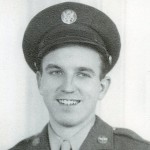
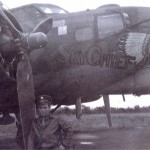 A number of years ago, I requested my dad, Staff Sergeant Allen Lewis Spencer’s military records from the National Personnel Records Center (NPRC) in Saint Louis, Missouri, only to be told that the records had been destroyed by a fire in 1973. I hadn’t heard about this before, and so really knew nothing about the details, except that I would never be able to find any more records of my dad’s military service during World War II, other than the ones we had, which was comparatively little. I wondered how it could be that the only military records for all those men were stored in one building, with no back up records. I know computers were not used as often, but there were things like microfiche back then. Nevertheless, the records were lost…and the loss felt devastating to me.
A number of years ago, I requested my dad, Staff Sergeant Allen Lewis Spencer’s military records from the National Personnel Records Center (NPRC) in Saint Louis, Missouri, only to be told that the records had been destroyed by a fire in 1973. I hadn’t heard about this before, and so really knew nothing about the details, except that I would never be able to find any more records of my dad’s military service during World War II, other than the ones we had, which was comparatively little. I wondered how it could be that the only military records for all those men were stored in one building, with no back up records. I know computers were not used as often, but there were things like microfiche back then. Nevertheless, the records were lost…and the loss felt devastating to me.
When I heard about the fire that destroyed my dad’s records, it all seemed like the distant past, but in reality, it was during my high school years. Then, it just seemed like a bad dream…a nightmare really. I couldn’t believe that there was no way to get copies of those records. My dad’s pictures, one of which was signed by the pilot of Dad’s B-17, on which Dad was a top turret gunner. Those pictures and the few records are all we have of his war years, and to this day, that makes me sad.
The fire broke out on July 13, 1973 and quickly engulfed the top floor of the National Personnel Records Center (NPRC). In less 15 minutes from the time the fire was reported, the first firefighters arrived at the sixth floor of the building, only to be forced to retreat as their masks began to melt on their faces. The fire was that hot!! There was just no way to successfully save the documents that were stored there. The fire burned out of control for more than 22 hours…even with 42 fire districts attempting to extinguish the flames. It was not until five days later that it was finally completely out. Besides the burning of records, the tremendous heat of the fire warped shelves while water damage caused some surviving documents to carry mold.

About 73% to 80% of the approximately 22 million individual Official Military Personnel Files stored in the building were destroyed. The records lost were those of former members of the U.S. Army, the Army Air Force, and the Air Force who served between 1912 and 1963. My dad joined the Army Air Force on March 19, 1943 and was discharged October 3, 1945. Many of the documents lost were from those years. They were gone, and there was no way to get them back. The National Personnel Records Center staff continues to work to preserve the damaged records that ere saved. There were about 6.5 million records recovered since the fire.
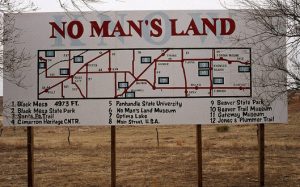 Little is known about the early life of William Coe, always known as “Captain” Bill Coe, except that he was a southern boy and worked as a carpenter and stonemason…until he turned to a life of crime, that is. It is believed that he fought with the Confederates during the Civil War, which is probably where he came to be known as the “Captain,” but there is no solid poof of this.
Little is known about the early life of William Coe, always known as “Captain” Bill Coe, except that he was a southern boy and worked as a carpenter and stonemason…until he turned to a life of crime, that is. It is believed that he fought with the Confederates during the Civil War, which is probably where he came to be known as the “Captain,” but there is no solid poof of this.
“Captain” Bill Coe arrived in the Oklahoma Panhandle about 1864, having decided to settle in that area. The area was referred to as “No Man’s Land”t that time. The strip of land, measuring some 35 miles wide by 168 miles long, was not included in any state and therefore left without any law and order. It was a haven for outlaws for years , and William Coe took advantage of that situation. Along a long high ridge jutting southwest from a large mesa near the town of Kenton, Oklahoma, “Captain” Coe built a “fortress” to protect himself and his gang of some 30 to 50 members, who primarily rustled cattle, horses, sheep, and mules. Coe’s headquarters, made of rock walls that were about three feet thick. There were portholes for protection rather than windows, as well as a fully stocked bar, living quarters for his men, and a number of ladies of the evening for their entertainment. Coe’s fortress became known as “Robber’s Roost.”
These men raided ranches and military installations from Fort Union, New Mexico to the south, Taos, New Mexico to the west, and as far north as Denver, Colorado to make their living. They also robbed freight caravans traveling along the Santa Fe Trail, as well as area ranches. Coe’s gang hid the stock in a canyon about five miles northwest of their hide-out. They built a fully equipped blacksmith shop, which contained all the tools necessary to maintain the herds, as well as changing the brands. When all hint of the previous owners were removed, the gang then moved the herds into Missouri or Kansas to sell. They got away with their lawlessness for several years…then they made a major mistake when they raided a large sheep ranch in Las Vegas, New Mexico in 1867, killing two men before making off with the herd to Pueblo, Colorado. They had been wanted men before, but these murders put Coe and his men on the “wanted list” like never before. Soon the U.S. Army from Fort Lyon, Colorado were pursuing them.
The Army attacked the Robber’s Roost fortress with a cannon. The walls crumbled like pebbles. The attack killed and wounded several of the outlaws. Though Coe and others were able to escape, several outlaws that weren’t killed in the battle were hanged on the spot, while others were arrested and taken back to Colorado. Coe continued his crimes and his freedom for about a year, hiding out in a small, now abandoned settlement of Madison, New Mexico, near Folsom. Then, while he was sleeping in a woman’s bunkhouse, her 14-year-old son rode from the ranch and contacted area soldiers, who soon returned and arrested Coe. The fugitive was then taken to Pueblo, Colorado to await trial and along the way, allegedly said, “I never figured to be “outgeneraled” by a woman, a pony, and a boy.”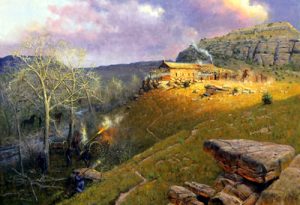
Before Coe could be brought to trial, vigilantes took matters into their own hands on the evening of July 20, 1868. They forcibly removed him from the jail, loaded him into a wagon, and hung him on a cottonwood tree on the bank of Fountain Creek, while he was still handcuffed and shackled. The next day, his body was discovered and buried under the tree that he was hanged from. Years later, when a new road was being built in the vicinity of Fourth Street in Pueblo, workers found the skeletal remains of what is believed to have been Coe’s.
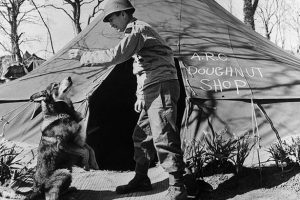
 During the United States led invasion of Sicily in July 1943, called Operation Husky, US Army dog, Chips and his platoon came under fire as they landed on a beach at dawn. Obviously, dogs made great sentries for the Army, and so were incorporated into the Army for that purpose. Chips was very good at his job and very loyal to his military masters. Fear never figured into Chips actions. If he saw that his platoon was under attack, Chips sprang into action. Chips charged an enemy machine gun to protect his people. His quick action was credited with saving his platoon. When the attack began, the soldiers scrambled to find cover, but Chips broke free from his lead and ran directly to the hut that housed the machine gun. Chips entered the hut, and immediately the shooting stopped. There was no barking or snarling, and no screaming, but momentarily, an enemy soldier appeared with Chips at his throat. Of course, that explained the silence. Neither the enemy soldier or Chips were able to speak or make any noise at that point, because they were otherwise occupied. I can only imagine the thoughts that were going through the enemy soldier’s mind. I would think there would be a large degree of praying for his life. At that point, I suspect the US Army platoon looked like angels sent to free the poor enemy soldier, and a prisoner of war camp might have looked like a relaxing vacation, compared to having his throat ripped out but a viscous German Shepherd dog. The quick and capable action displayed by Chip allowed the platoon to push on with their mission.
During the United States led invasion of Sicily in July 1943, called Operation Husky, US Army dog, Chips and his platoon came under fire as they landed on a beach at dawn. Obviously, dogs made great sentries for the Army, and so were incorporated into the Army for that purpose. Chips was very good at his job and very loyal to his military masters. Fear never figured into Chips actions. If he saw that his platoon was under attack, Chips sprang into action. Chips charged an enemy machine gun to protect his people. His quick action was credited with saving his platoon. When the attack began, the soldiers scrambled to find cover, but Chips broke free from his lead and ran directly to the hut that housed the machine gun. Chips entered the hut, and immediately the shooting stopped. There was no barking or snarling, and no screaming, but momentarily, an enemy soldier appeared with Chips at his throat. Of course, that explained the silence. Neither the enemy soldier or Chips were able to speak or make any noise at that point, because they were otherwise occupied. I can only imagine the thoughts that were going through the enemy soldier’s mind. I would think there would be a large degree of praying for his life. At that point, I suspect the US Army platoon looked like angels sent to free the poor enemy soldier, and a prisoner of war camp might have looked like a relaxing vacation, compared to having his throat ripped out but a viscous German Shepherd dog. The quick and capable action displayed by Chip allowed the platoon to push on with their mission.
Of course, Chips was simply doing his job, and likely thought nothing more of it. He loved these men, and putting his life on the line for them was just what he would do for those he loved. The men he saved, felt very differently about their hero, however. It’s hard not to feel like the being that put itself between you and certain death is very special. At the time, nothing was done to recognize the heroic act of Chips, but the men never forgot what their fellow soldier had done for them. My guess is that Chips got a pat on the head, and maybe a 
 little extra food that night, but it was not enough for what he had done. How could it be?
little extra food that night, but it was not enough for what he had done. How could it be?
I guess the Army must have agreed, because Chips was posthumously awarded the PDSA Dickin Medal, which is recognized as the “Animal Victoria Cross,” 71 years after his passing, for protecting British troops. Chips was also a sentry at the Casablanca Conference in January 1943, where Churchill and Roosevelt met, so he had some experience in sentry duties before his famous act of protection. Chips continued on in his career until 1945. Then he was returned to his family in New York in 1945. Unfortunately, he died the next year…but Chips died a hero.
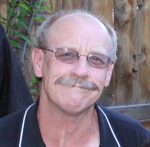
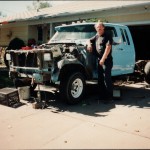 The longer we are married, the more blessed I feel with my soulmate. And…I’m not the only one that is blessed by my husband. Bob is a mechanic…through and through. For years before he had his own garage, we went to his parents house so he could work on cars there. When we bought our current house, it didn’t have a garage either, but it had enough room in back to build one, so we did. It was strange for him to simply have to go out in the back yard to get to the garage where he was working on someone’s car, but it made him very happy. In fact, I can’t think of a “gift” Bob has enjoyed more, or gotten more use out of than his garage. Most people would not even consider the garage to be a gift, but for Bob, it really was. No longer would he have to stand out in the wind and cold to work on a car, or make a trip to his parents’ house to work on a car. He had a place of his own to do that.
The longer we are married, the more blessed I feel with my soulmate. And…I’m not the only one that is blessed by my husband. Bob is a mechanic…through and through. For years before he had his own garage, we went to his parents house so he could work on cars there. When we bought our current house, it didn’t have a garage either, but it had enough room in back to build one, so we did. It was strange for him to simply have to go out in the back yard to get to the garage where he was working on someone’s car, but it made him very happy. In fact, I can’t think of a “gift” Bob has enjoyed more, or gotten more use out of than his garage. Most people would not even consider the garage to be a gift, but for Bob, it really was. No longer would he have to stand out in the wind and cold to work on a car, or make a trip to his parents’ house to work on a car. He had a place of his own to do that.
Bob has been working on the cars of his friends and family for as ling as I’ve known him. People often ask him, or me, if he ever gets tired of it. The answer is always quick, “No, he likes it. It makes him happy.” Most people want to come home after a long day at work and just relax, but not Bob. There’s lots of time to relax after it get dark. I suppose that Bob is of the “make hay while the sun shines” generation. After a long day at work, Bob would often put in another couple of hours out in the garage. Finally, he found that he had too much to do to waste time going to work anymore. That was a couple of years ago, and he hasn’t changed his mind about that one bit. He likes working for himself much better!!
After his retirement, I think lots of people thought Bob was just going to park in front of the television set and 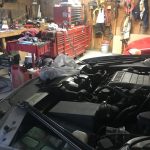
 fade away. They were wrong. Bob’s work continued..it just changed locations…and bosses. No he simply walks out the back door to go to “work,” if that’s what you choose to call it. As to his boss, I’ve tried to tell him that I’m his boss now, but he doesn’t believe me. In fact, he seems to think that he is his boss, and I supposed he is right, but I don’t think I’ll ever admit to that. It doesn’t matter anyway, since he is doing what makes him happy…no matter who is bossing him. Today is Bob’s birthday. Happy birthday Bob!! Have a great day!! I’ll love you forever and ever.
fade away. They were wrong. Bob’s work continued..it just changed locations…and bosses. No he simply walks out the back door to go to “work,” if that’s what you choose to call it. As to his boss, I’ve tried to tell him that I’m his boss now, but he doesn’t believe me. In fact, he seems to think that he is his boss, and I supposed he is right, but I don’t think I’ll ever admit to that. It doesn’t matter anyway, since he is doing what makes him happy…no matter who is bossing him. Today is Bob’s birthday. Happy birthday Bob!! Have a great day!! I’ll love you forever and ever.

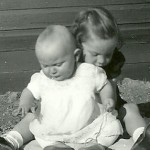 My sister-in-law, Marlyce Schulenberg was a blessing that came as a free gift with my marriage to her brother, Bob. Of course, I consider all of my in-laws to be a blessing, but I think that they will all agree that Marlyce was a special kind of blessing. I don’t mean to say that Marlyce was perfect, or that the whole family always got along with her, although I don’t recall a fight I personally had with Marlyce. Even though the siblings fought with their sister periodically, I can tell you, without doubt that they considered her a sweet blessing too.
My sister-in-law, Marlyce Schulenberg was a blessing that came as a free gift with my marriage to her brother, Bob. Of course, I consider all of my in-laws to be a blessing, but I think that they will all agree that Marlyce was a special kind of blessing. I don’t mean to say that Marlyce was perfect, or that the whole family always got along with her, although I don’t recall a fight I personally had with Marlyce. Even though the siblings fought with their sister periodically, I can tell you, without doubt that they considered her a sweet blessing too.
Marlyce had a kind heart. In fact,there wasn’t an unkind bone in hr body. She loved doing things for people, in fact, she would do just about anything that was in her power to do. Marlyce was developmentally disabled, but she was an expert at a number of things. She could cook and bake, and was famous for her chocolate chip cookies. She also loved to knit and made great stocking caps for people. She even sold them at craft fairs. Marlyce loved making things and she loved giving things to people.
The one thing Marlyce really loved though…babies. She was the oldest of her siblings, and so, she got to help out with all her siblings, even if she couldn’t do many things well, her parents didn’t refuse to let her help. She liked being the big helper, and when she became an aunt, she was just wonderful with the kids. All of the kids loved Aunt Marlyce. She was very special to them. She didn’t have a chance to become a great aunt, because 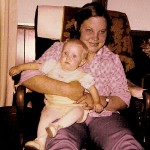
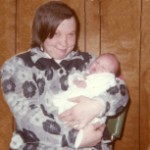 she passed away far too young…at just 39 years. When I think about that, it makes me sad, because not only did Marlyce miss out on being a great aunt, but her grand nieces and grand nephews missed out on the special aunt she was. And now that she is a great grand aunt to my little great granddaughter. It makes me sad to know that another generation is going to miss out on sweet Aunt Marlyce. Today would have been Marlyce’s 68th birthday, but instead, she is 39 years old again. Happy birthday in Heaven Marlyce. We love and miss you very much.
she passed away far too young…at just 39 years. When I think about that, it makes me sad, because not only did Marlyce miss out on being a great aunt, but her grand nieces and grand nephews missed out on the special aunt she was. And now that she is a great grand aunt to my little great granddaughter. It makes me sad to know that another generation is going to miss out on sweet Aunt Marlyce. Today would have been Marlyce’s 68th birthday, but instead, she is 39 years old again. Happy birthday in Heaven Marlyce. We love and miss you very much.

 If you want to know about a person, talk to those who know that person best…their family. Of course, I know my brother-in-law, Chris Hadlock, but nobody knows him as well as his wife and kids. I wanted to know what kind of dad Chris is, because that delves into a whole different dimension of the person he is. I asked his kids to tell me the one thing they loved most about their dad. The first thing I found out, was that these kids couldn’t give me just one thing. In fact, they had a hard time keeping it at just two or three things.
If you want to know about a person, talk to those who know that person best…their family. Of course, I know my brother-in-law, Chris Hadlock, but nobody knows him as well as his wife and kids. I wanted to know what kind of dad Chris is, because that delves into a whole different dimension of the person he is. I asked his kids to tell me the one thing they loved most about their dad. The first thing I found out, was that these kids couldn’t give me just one thing. In fact, they had a hard time keeping it at just two or three things.
Jessi Sawdon is Chris and my sister, Allyn’s first child. Told me of how helpful her dad is. No matter what he has going, or how full his day is, he always finds time, somewhere in the day to come and help with whatever his kids needed. Their needs are always his priority. She also told me that when it comes to his grandbabies…Chris has the softest heart, and that those grandbabies think their grandpa hung the moon. On one hand, it’s hard for me to fathom Chris as softhearted, because of all the years he spent as a cop, and yet I think that most people who know Chris have seen that softhearted side at one time or another. Nevertheless, when it comes to grandbabies, every grandparent develops a soft heart where their grandbabies are concerned.
Ryan Hadlock, Chris and Allyn’s son, and second child, remembers going fishing with his dad. He remembers the lessons his dad gave him so that he could become a good fisherman, and he remembers…like it was just yesterday…that while his dad was teaching him to fly fish, that his dad caught 75 fish in one day!! Those father/son times were and always will be very special to Ryan. I know they were very special to his dad too. Ryan also told me that he loves to see the joy his dad gets…just from being with all of his kids and grandkids. There is nothing quite like knowing that your parents love you, your siblings, and your kids more than anything in the world.
Lindsay Moore, Chris and Allyn’s third child immediately said, “Oh man! One thing!?!?!? How is that possible?” That was the sentiment I got from all the kids. Lindsay told me about how tenderhearted her dad is. Lindsay’s favorite part of her dad is a side of him that not everyone gets to see. It is a side of Chris that is reserved for Allyn, their kids and the grandkids. It has been an enlightening thing to have all of these kids tell me, not about the strength everyone else saw in Chris for so many years on the police force, but about the very different man that came home from work each night to simply love on his family. Lindsay also told me about the way that Chris brought fun and laughter to their lives with his incredible witty and sense of humor.
Kellie Hadlock is Chris and Allyn’s youngest child. She was the first one to mention work ethic, saying that Chris is the hardest worker she knows and that he does everything with integrity…always doing the right thing! 
 Kellie’s sweetest thought of her dad is that he is the best guitar player she know. One of her favorite things to do in the world, is to sing with her dad. Kellie loves singing, and when the two of them get together, it is truly beautiful. We all love hearing it, and can’t wait for the next time. Kellie says, “He is literally the best dad in the world!! Sorry there was no way I could have said just one thing!” Today is Chris’ birthday!! Thanks to all of his kids for their special tribute to their dad. Happy birthday Chris!! Have a great day!! We love you!!
Kellie’s sweetest thought of her dad is that he is the best guitar player she know. One of her favorite things to do in the world, is to sing with her dad. Kellie loves singing, and when the two of them get together, it is truly beautiful. We all love hearing it, and can’t wait for the next time. Kellie says, “He is literally the best dad in the world!! Sorry there was no way I could have said just one thing!” Today is Chris’ birthday!! Thanks to all of his kids for their special tribute to their dad. Happy birthday Chris!! Have a great day!! We love you!!
 New York City can get hot in the summer. Maybe that is an understatement. I don’t think that New York City has more heat waves than other places, but because of so much asphalt, the heat is in the air, and then radiates back up from the streets again and again. Heat waves like this can not only make people sick, but they can kill people as well. Sometimes, desperate times bring desperate measures. Bathhouses, beaches, community pools, floating pools docked off the East River, all in an effort to cool off the overheated people. Nobody can say that New York City made no effort over the years to keep residents cool on hot summer days, but what of those who couldn’t get to the places set up too cool the the people off. Something had to be done. Enter the Swimmobile.
New York City can get hot in the summer. Maybe that is an understatement. I don’t think that New York City has more heat waves than other places, but because of so much asphalt, the heat is in the air, and then radiates back up from the streets again and again. Heat waves like this can not only make people sick, but they can kill people as well. Sometimes, desperate times bring desperate measures. Bathhouses, beaches, community pools, floating pools docked off the East River, all in an effort to cool off the overheated people. Nobody can say that New York City made no effort over the years to keep residents cool on hot summer days, but what of those who couldn’t get to the places set up too cool the the people off. Something had to be done. Enter the Swimmobile.
In the crisis, New York City decided to bring the pool to the people. These were the Swimmobile pools. They were attached to a truck, which could be parked on a street all day and conveniently towed away at night. “Swimmobiles began during the Heckscher administration [1960s-1970s] that literally took pools to the streets to underserved areas,” says the Parks Department website. It was more that trying to give more people the right to go swimming…this was life and death. A 1976 New York Times article stated that the city owned five mobile pools, which were towed from Randall’s Island to different corners of the city. These Swimmobiles Probably saved countless lives, and the people had fun too.
These past couple of days have brought temperatures in the high 90s and low 100s to Casper, Wyoming, where  I live, and were it not for air conditioning, I would most likely be screaming for a Swimmobile myself, but I’m quite certain, none would be found. These were something that served its purpose in a time of need, and then went the way of most things when technology advances things…into the past. These days, when we are hit with a heatwave, people drive to the pools, lakes, or rivers…or they simply turn on the air conditioner, or if there happens to be an ice cream truck in the area, we can always indulge in some cold treats, as a way to cool off. Of course, if there is a power blackout, they would have to come up with another solution, as ice cream would not hold out long. Thankfully, outages don’t last too long, most of the time, or we might have to bring back the Swimmobile.
I live, and were it not for air conditioning, I would most likely be screaming for a Swimmobile myself, but I’m quite certain, none would be found. These were something that served its purpose in a time of need, and then went the way of most things when technology advances things…into the past. These days, when we are hit with a heatwave, people drive to the pools, lakes, or rivers…or they simply turn on the air conditioner, or if there happens to be an ice cream truck in the area, we can always indulge in some cold treats, as a way to cool off. Of course, if there is a power blackout, they would have to come up with another solution, as ice cream would not hold out long. Thankfully, outages don’t last too long, most of the time, or we might have to bring back the Swimmobile.

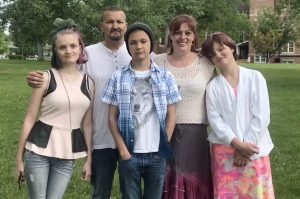 If you ask my nephew, Rob Masterson, about his daughter Audrianna, he will tell you that she is a joy to be around, and like his other children, she is the joy of his life. i believe that is true of all his kids. As to Audrianna, casually known as Anna, she is a soft-spoken girl, who makes friends easily. This 4th of July, at the fireworks display in Casper, Wyoming, while viewing them with the daughter of a co-workers of her dad’s, Anna met a girl named Aurora, casually known as Rory. You might think that Aurora is a unusual name, but not in our family, because Anna also has a second cousin named Aurora. Be that as it may, Anna and her new friend, Aurora quickly became good friends. in fact, Aurora spent the night if the 4th with Anna, and the next day, she got to go to Thermopolis with her friend as a part of Anna’s birthday celebration. Most of the swimmers came back sunburned, but not Anna or her brother Matthew, who both tan easily. A great time was had by all, and the summer looks to be going great for the new friends.
If you ask my nephew, Rob Masterson, about his daughter Audrianna, he will tell you that she is a joy to be around, and like his other children, she is the joy of his life. i believe that is true of all his kids. As to Audrianna, casually known as Anna, she is a soft-spoken girl, who makes friends easily. This 4th of July, at the fireworks display in Casper, Wyoming, while viewing them with the daughter of a co-workers of her dad’s, Anna met a girl named Aurora, casually known as Rory. You might think that Aurora is a unusual name, but not in our family, because Anna also has a second cousin named Aurora. Be that as it may, Anna and her new friend, Aurora quickly became good friends. in fact, Aurora spent the night if the 4th with Anna, and the next day, she got to go to Thermopolis with her friend as a part of Anna’s birthday celebration. Most of the swimmers came back sunburned, but not Anna or her brother Matthew, who both tan easily. A great time was had by all, and the summer looks to be going great for the new friends.
Anna is a smart girl, who loves school. She is very inquisitive, and gets almost straight As as a student. This is something I have noticed in Anna as well. She is a concentrator,much like her Great Aunt Caryn, and will think on a problem until she has a solution to it. That makes her a great student. She just doesn’t give up. Anna is also very loving, very protective of her sister, Raelynn and her brother, Matthew. Eve though they are both older than Anna, she can be fierce if anyone is picking on them. People don’t and really, shouldn’t mess with Anna when she has her mother bear instincts working. Nevertheless, most of the time it is Anna’s loving nature you see. She is quick to hug and to let her friends and family know that she loves them.
Anna loves to play Minecraft on the family Xbox. Again, I find myself looking to see what Minecraft is all about, because I get it mixed up with Minesweeper. Minesweeper is about sweeping an area for landmines, while Minecraft is about building things with blocks. Somehow the name doesn’t fit my idea of what it is. What do 
 mines have to do with building blocks, anyway? Nevertheless, the game looks interesting, and it might be something I would like…if I were into games. Anna, however, is into games, and very into Minecraft…as are her siblings and just about every other kid I know. It is just what the kids do these days, I guess. Today is Anna’s birthday.I can’t believe she is already 11 years old. Where has the time gone. Happy birthday Anna!! Have a great day!! We love you!!
mines have to do with building blocks, anyway? Nevertheless, the game looks interesting, and it might be something I would like…if I were into games. Anna, however, is into games, and very into Minecraft…as are her siblings and just about every other kid I know. It is just what the kids do these days, I guess. Today is Anna’s birthday.I can’t believe she is already 11 years old. Where has the time gone. Happy birthday Anna!! Have a great day!! We love you!!
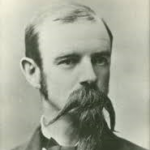
 As our vacation comes the an end, I found myself contemplating a few things about the Black Hills, and why we love them so much. Of course, Harney Peak (now renamed Black Elk Peak, but always Harney Peak in my mind) is our favorite hike, and one we have hiked 16 times now. As we were driving to Keystone to catch the 1880 Train, which is our last day of vacation tour every year, I can get a glimpse of Harney Peak, and it occurred to me that I might be much the same as Doctor Valentine Trant O’Connell McGillycuddy, the white man whose ashes are entombed at the top of the peak at the fire tower there. McGillycuddy was the first white man ever to climb Harney Peak. And when he was an Indian Agent, he was respected and even called “Tasunka Witko Kola” (Crazy Horse’s friend), because he was of course, Crazy Horse’s friend, but was also loved and respected by all of the Lakota Sioux tribe. As a doctor, he treated Crazy Horse’s wife, which brought about their lifelong friendship. He also treated many other Lakota Sioux warriors when they were wounded in a wrongful attack by the army. To the Lakota Sioux, even his old enemy, Red Cloud, McGillycuddy was known as “Wasicu Wakan,” which literally means Holy White Man. It was probably the greatest sign of respect he could have received. Now I’m not saying that I could even begin to compare to McGillycuddy in all the things he did, but in one way, we are the same. We both love the Black Hills, and especially Harney Peak. After McGillycuddy passing, and as a show of respect, and to commemorate his love of the Black Hills and Harney Peak, his ashes were entombed in that amazing place.
As our vacation comes the an end, I found myself contemplating a few things about the Black Hills, and why we love them so much. Of course, Harney Peak (now renamed Black Elk Peak, but always Harney Peak in my mind) is our favorite hike, and one we have hiked 16 times now. As we were driving to Keystone to catch the 1880 Train, which is our last day of vacation tour every year, I can get a glimpse of Harney Peak, and it occurred to me that I might be much the same as Doctor Valentine Trant O’Connell McGillycuddy, the white man whose ashes are entombed at the top of the peak at the fire tower there. McGillycuddy was the first white man ever to climb Harney Peak. And when he was an Indian Agent, he was respected and even called “Tasunka Witko Kola” (Crazy Horse’s friend), because he was of course, Crazy Horse’s friend, but was also loved and respected by all of the Lakota Sioux tribe. As a doctor, he treated Crazy Horse’s wife, which brought about their lifelong friendship. He also treated many other Lakota Sioux warriors when they were wounded in a wrongful attack by the army. To the Lakota Sioux, even his old enemy, Red Cloud, McGillycuddy was known as “Wasicu Wakan,” which literally means Holy White Man. It was probably the greatest sign of respect he could have received. Now I’m not saying that I could even begin to compare to McGillycuddy in all the things he did, but in one way, we are the same. We both love the Black Hills, and especially Harney Peak. After McGillycuddy passing, and as a show of respect, and to commemorate his love of the Black Hills and Harney Peak, his ashes were entombed in that amazing place.
Of course, for us there are many special places in the Black Hills. We love the trails. Among our favorites are, of course, Harney Peak, Sunday Gulch, Horsethief Lake, Cathedral Spires, the Flume Trail, the Mickelson, the Centennial, and French Creek trails. These trails take us to beautiful areas of the Hills that you just can’t see from the road. They are inside places like the Black Elk Wilderness areas. These are remote places where you 
 have to sign in, just in cast you don’t come back out. It gives them a place to start looking for you. In reality, it would be hard to get lost, provided you stay on the trail. The trails are well marked and easy to spot. It’s just not easy to get lost. Some of the trails are really hard, however, and sometimes it just depends on the shape you’re in. A trail that was really hard one year can be a lot more tolerable the next year. The Black Hills are a challenge, at least for the tourist who gets away from the touristy things, and looks for the remote beauty of the Black Hills.
have to sign in, just in cast you don’t come back out. It gives them a place to start looking for you. In reality, it would be hard to get lost, provided you stay on the trail. The trails are well marked and easy to spot. It’s just not easy to get lost. Some of the trails are really hard, however, and sometimes it just depends on the shape you’re in. A trail that was really hard one year can be a lot more tolerable the next year. The Black Hills are a challenge, at least for the tourist who gets away from the touristy things, and looks for the remote beauty of the Black Hills.
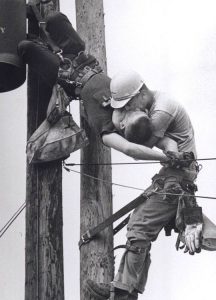 It’s every workers nightmare…being faced with a life or death situation involving a co-worker, and you are the only thing standing between the co-worker and certain death. On a hot July day in Florida in 1967, a nightmare emergency situation would unfold making linemen history, and journalistic history at the same time.
It’s every workers nightmare…being faced with a life or death situation involving a co-worker, and you are the only thing standing between the co-worker and certain death. On a hot July day in Florida in 1967, a nightmare emergency situation would unfold making linemen history, and journalistic history at the same time.
Rocco Morabito was a journalist with the Jacksonville Journal. His day began as he was headed to a local news event. He paused to watch as linemen worked above him, before heading on to his job for the day, covering a railroad strike. H snapped a few images and then headed back to the office, but as he passed the linemen, he heard screaming. Looking up, he saw Randall G. Champion, unconscious, his body hanging limp but still in his safety harness. Fellow lineman, J. D. Thompson was an apprentice lineman, but in a nightmare emergency moment, he sprang into action with lightening speed, racing to the pole and quickly climbing up to Champion. The position of Champion’s body made it impossible to administer CPR, so Thompson cradled his head in his arm and began giving mouth-to-mouth resuscitation, working to breath life back into his fellow lineman. His quick thinking and actions, made Thompson a hero that day.
Being a photojournalist, Rocco instinctively snapped an image and then ran to his car, to use the radio to have the paper call an ambulance. In reality, Champion would owe his life to both men, because they both reacted quickly and did what needed to get done to get Champion the help he needed. Unable to further assist with the rescue, Rocco grabbed his camera. He backed up and continued to walk backward until he backed into a house. With no where else to go, he clicked “THE historic image.” As he snapped that last photo, Thompson yelled out, “He’s Breathing!”
After Rocco ‘got the shot’, he returned to his car and again radioed the newspaper dispatch, this time, telling them, ”You might want to wait for this. I think I’ve got a pretty good one.” The paper waited, and the wait was indeed worth it. Rocco Morabito won the 1968 Pulitzer Prize for Spot Photography…the first of its kind. Bob Pate, the copy editor of the Jacksonville Journal is credited with the ‘slug that stuck’, ”The Kiss of Life.” From safety classes to anthologies, and even a documentary in 2008 on the 40th anniversary of that fateful event, the photo has maintained a life of its own. When I saw it, I was as moved by it as anyone else who has ever seen it and been told what it was. You just don’t walk away from that without having a sense of awe about the events of that day. And the training value of it would be phenomenal!!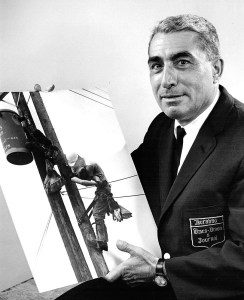
Champion and Thompson both continued to work as linemen until retirement. Champion retired in 1991, but sadly passed away in 2002 at the age of 64, as a result of heart failure. Thompson retired around 1995 having received several awards for his heroism and quick thinking. He is noted as having said that, “he was acting on his training and was thankful he could revive his downed co-worker.” He was just “doing his job.” What?? I don’t think so!! This was not just doing his job. This was heroic. That is typical of most heroes. They were “just doing their job.” Rocco worked for the newspaper for a total of 42 years. For 33 of those years, he worked as a photographer. He retired in 1982, and passed away at the age of 88 on April 5, 2009. His work, including “The Kiss of Life”, will continue to live on, illustrating the harrowing work that our linemen men and women perform every day, and sometimes just how heroic they really are.

